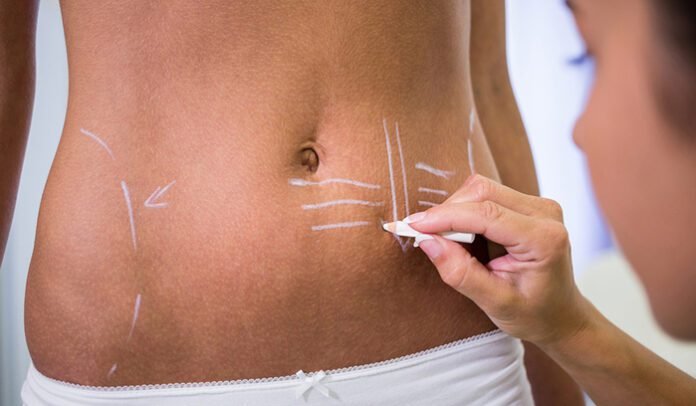Last Updated on April 28, 2024 by Umer Malik
Getting a tummy tuck (abdominoplasty) can help give you the flat, toned stomach you’ve always wanted. However, the procedure does involve some swelling that can take weeks or months to fully resolve. Here are some tips on what to expect with post-tummy swelling and how you can help reduce it:
Table of Contents
What is the timeline for swelling?
During a tummy tuck procedure, the surgical process involves cutting the blood and lymphatic vessels responsible for draining fluids. This temporary disruption makes it challenging for the body to efficiently eliminate the build-up of fluids while leading to swelling.
Initial swelling: In the first 2-3 days, you can expect some discomfort, with swelling reaching its maximum level. Your healthcare provider will prescribe medication to assist in pain management. However, certain pain medications may lead to constipation, which is also responsible for swelling and bloating.
Fluctuation in swelling: Around days 4-7, you may observe some variations in swelling throughout the day. It can increase when you stand for prolonged periods and decrease after getting deep sleep. Moreover, the formation of scar tissue might cause a temporary surge in swelling. However, this swelling will diminish as the scar tissue matures over time.
Noticeable improvement: By 2-3 weeks, most of the severe swelling should have resolved. However, your abdomen may still have some puffiness and lack muscle definition.
Final settling: It can take 3-6 months for residual swelling to go away fully. Scar tissue in the area also matures during this time, which can subtly change your final appearance.
How do I reduce swelling quickly?
Here are some helpful tips you can follow before and after this cosmetic surgery to help minimise swelling and speed up your recovery:
Rest: Ensure adequate rest and regularly prop up your lower legs when possible. Keeping your legs elevated above hip level encourages drainage and reduces fluid buildup.
Care: Maintain diligent incision care to prevent infection and inflammation; otherwise, it can worsen swelling. Gently clean the surgical area daily.
Compression Garment: Wear your medical compression garment as directed by your surgeon. The constant pressure helps fight inflammation, reduce water retention and achieve better abdominal contouring.
Drink more water: Hydration is key. Consume plenty of fluids to facilitate the flushing out of toxins from your body, reducing the likelihood of water retention.
Gentle movement: Light walking in the initial weeks can assist in reducing swelling, enhancing circulation, and lowering the risk of blood clots.
What will make the swelling worse?
While patience and supportive care will help reduce swelling over time, there are also some things to avoid as they may exacerbate swelling and fluid buildup. Activities or situations to be careful of include:
Heavy lifting or strenuous activity: Engaging in activities that increase your blood pressure or heart rate can contribute to fluid leakage and swelling. It’s essential to take it easy and refrain from heavy lifting or strenuous activities during the initial stages of recovery.
High amount of sodium in your diet: Consuming foods high in salt can cause your body to retain more water, leading to swelling or puffiness. Limit sodium intake.
Drinking and smoking: Two major lifestyle habits to avoid while recovering are alcohol and smoking. Alcohol, even in moderation, can cause inflammation that leads to impaired healing and more noticeable swelling. Alcohol causes blood vessels to dilate and leak fluid, which can directly worsen post-surgery swelling. Smoking can also significantly increase swelling as it slows the process of supplying oxygen and nutrients that are needed for surgical incisions.
Constipation straining: The bearing down motion can put pressure on the surgery site and may worsen fluid retention and cause swelling. Stay on top of fibre intake and bowel movements.
Be Patient if Swelling Persists
While these measures can help control swelling and move your recovery in the right direction, some swelling can take months to resolve. Don’t be too quick to think something is wrong if you still don’t see your final results after 1-2 months. Stay patient, continue supportive care, and let your body’s natural healing process run the time it needs for the best outcome.













